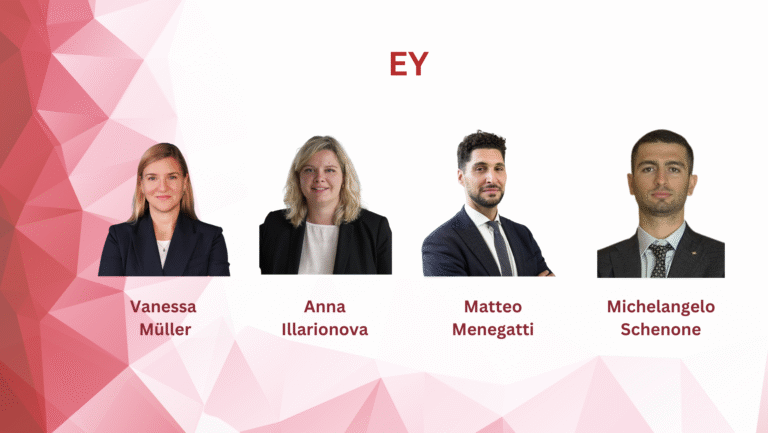By Simarjit Singh Singh, Director – Advisory, Kai Braun, Partner – Alternatives Advisory Leader, and Valerie Tixier, Assurance Partner – Private Equity Client & Market Leader at PwC as published in Insight Out #29.
Key Takeaways
- Challenges in investor onboarding, AML/KYC checks, leading to delayed responses and coordination issues among fund operations teams.
- Decentralised oversight of investor query management and challenges in efficiently managing and responding to investor queries, leading to potential delays and communication issues.
- Issues related to data access, clean data models with ability to drill down at next level of detail.
- Significant increase in investor data needs due to shift from annual investor queries to quarterly requests for detailed information on fund performance and holdings.
- However, we observe that many asset managers are investing significantly into their fund operations to build strong foundations for providing differentiated services to their investors.
Overview
While institutional investors are breathing a sigh of relief in 2024 with a stable inflationary outlook and a strong markets recovery, from the sharp market downturn of 2022, private capital portfolios are struggling with lagging returns and lack of liquidity. Although overall returns for larger investors were still positive for first half of 2023, private equity firms were struggling with slowdown in deal activity in 2023 compared to the prior year as high interest rates, and macroeconomic headwinds continue to affect financial markets.
As private capital portfolios have grown significantly as a percentage of total assets under management, with over a decade of outperforming public markets, returns are increasingly under scrutiny by investors due to limited transparency on portfolio performance data and valuations. The overarching theme among investors is a desire for more transparency and information sharing. This extends beyond mere curiosity, as enhanced information flow is seen as crucial for managing investor relations (IR) effectively, proactively addressing issues, and maintaining commercial relationships efficiently. Asset Managers of private capital will need to look to solutioning three key challenges when it comes to investor servicing:
- Investor onboarding
- Investor queries and communications, and
- Ongoing investor reporting
Investor onboarding challenges
The overall investor onboarding experience varies, with some cases running smoothly while others becoming exceptionally challenging. In certain highly manual operational situations, instances have occurred where investors waiting for closure or legal comments were inadvertently overlooked due to resource constraints or a lack of focus. External factors, such as the impact of events like the Coronavirus, can significantly disrupt the process, necessitating direct involvement of the in-house teams to monitor and resolve issues, especially where most of the operational aspects including data and documentation collection process is outsourced to third parties. Such cases require active involvement to monitor and resolve, ultimately making the onboarding experience difficult.
The IR teams have limited visibility on the onboarding information and status of different investors in terms legal documentation, AML/KYC, last contact dates etc. This opacity results in delays and missed investor queries, impacting the fundraising process.
A fundraising workflow platform where all parties can coordinate and investors can interact and upload information, including downstream sharing of data and documents with relevant teams and service providers, has the potential to significantly streamline this process for investors.
Investor queries and communication
Over the past decade, there has been a significant shift from investors asking annual questions to now quarterly requests for detailed information on fund performance and holdings. This surge in investor queries has led to a substantial increase in data needs. Additionally, the growing number of funds and their increasing sizes, along with expanding into new strategies, pose challenges in managing and processing data effectively. The current situation involves a plethora of data with limited structured data, leading to a lack of scalability and increased workload for the IR and fund operations teams.
While fund operations teams hold a vast amount of data, there are concerns about the visibility and accessibility of this data, especially from the IR team’s perspective. There is a need for improvements to enable scalable responses to investor queries.
The prevalent model of handling investor queries involves a scattered approach, with emails going to different contacts and teams. Streamlining this communication process to a centralised mailbox could enhance efficiency, providing better oversight and a more standardised approach to query resolution.
Overall deployment of a ticketing system with efficient channelling of queries to relevant teams and a database repository to track the response timeline and information captured in the process and ensure strong oversight of query resolution process can ultimately solve the issue of disparate information flows.
Ongoing reporting
Timely delivery of quarterly and annual reports, especially ILPA templates have been a challenge, with reports being late or not having all relevant data points or sufficient granularity, impacting the internal reporting process for investors. Investors need to approach asset managers still regularly for financial statements, co-investment reports, ILPA templates, custom Excel templates and ad-hoc audit/client requests. Investors also need more comprehensive ESG reporting information beyond carbon emissions.
Our ongoing work to improve reporting and query resolution process demonstrated that majority of investors face challenges in getting timely responses and relevant information in a flexible manner. The ad hoc information is often compiled in a haphazard manner with errors and omissions and mostly hard to reconcile with the main reporting figures. Such requests for more automated feeds and higher granularity will require asset managers to make significant investments to maintain clean data and provide easily accessible channels to internal and external stakeholders. Asset managers also need to build better review and controls processes to ensure that there is good visibility on delayed reporting with more automation in reporting and tighter NAV review cycles, to further shorten the reporting cycles and have more buffer in the delivery timelines.
How to win this race
It can be overwhelming for asset managers to establish a clear approach and efficiently tackle these challenges in order to build a roadmap for change. Most asset managers and fund administrators lack mature solutions in these areas and hence continue to manage these critical processes in a highly fragmented and manual way. Additionally, there are no standard tools to automate the majority of core fund operations processes which often lead to deployment of point solutions that are rarely industrialised with proper integrations to document and data management systems.
Asset managers need to embark on a journey to map these processes and corresponding data attributes, to identify best technology solutions that can meet the requirements. Additionally, internal stakeholders need to be aligned with future process design to avoid delays in solutions rollout. Depending on the existing process and technology architecture, an existing point solution, or a generic or niche workflow orchestration tool along with a database management system, should provide the building blocks to start automating workflows. Asset managers will need to apply similar operational improvements as they perform with their investment portfolios to secure their ability to operate and interact with investors in a meaningful manner and reduce operational risk in fund raising.
Conclusion for asset managers:
- Common understanding and definitions of financial figures to create consistency in reporting and responses to investor queries.
- Development of a robust data model that facilitates self-service for IR, fund operations and fund administrators in fund reporting and query resolution.
- Workflow for investor queries and investor onboarding, including a ticketing system and an escalation process, with a focus on response times and analytics.




